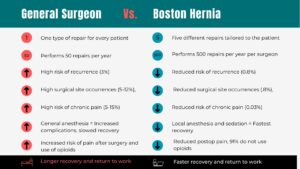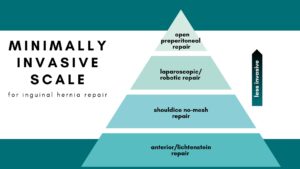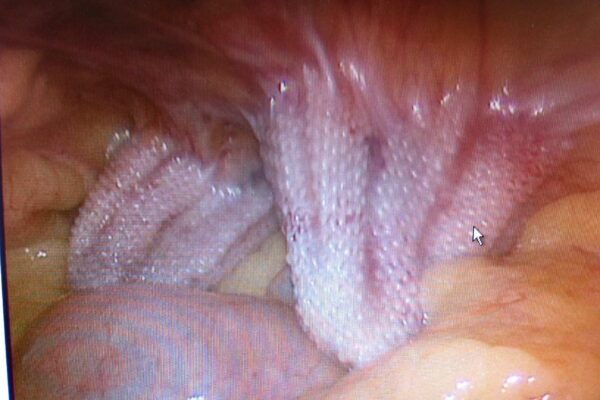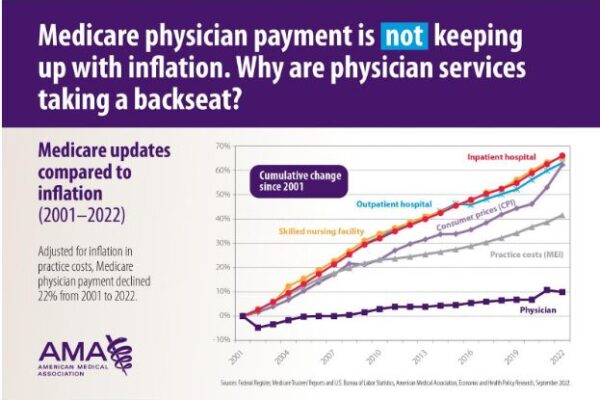WELCOME TO BOSTON HERNIA
Our name makes it clear: our focus is performing hernia surgery. This has allowed us to continually perfect hernia surgery and the care we provide, before and after surgery, for the benefit of our patients.
Unlike most general surgeons who perform a range of procedures—breast surgery, colon surgery, appendix removal, gallbladder surgery, along with hernia surgery—we decided to specialize in ambulatory hernia care. The result is superior outcomes for our patients.
Here are four things you should know about Boston Hernia:
- Our clinical team will give you the time you need and answer all your questions.
- Because you are likely to have minimal pain after surgery, you probably won’t need to take any opioid medication. That is true for more than 90% of our patients. (Visit our Opioid Reduction page for details.)
- You’ll return to work and regular activities quickly. Most of our patients are surprised at just how quickly this happens; 40% of our patients report missing no work at all. (Visit our Fast Recovery page for details.)
- You’ll feel confident knowing that your surgeon specializes in hernia surgery—and has a proven track record of refining both the surgical technique and the care that patients receive. We perform more than 1000 hernia repairs per year.
What makes Boston Hernia different?

DR. REINHORN EXPLAINS INGUINAL HERNIA REPAIR TECHNIQUE
“Few surgeons across the U.S. perform hernia surgery the way we do,” explains Dr. Reinhorn. “We operate through a small, open incision, which allows us to place mesh behind the abdominal wall. This leads to less pain and a faster recovery—clear benefits to our patients. I’ve been performing hernia repairs this way for 20 years.”
He and Lauren Ott, PA-C, work together as a team, see every patient and are committed to providing outstanding care.
LEARN ABOUT UMBILICAL HERNIA SURGERY
We perform minimally invasive surgery to repair an umbilical/ventral hernia. This involves making a small incision in your abdomen in order to gain access to your hernia or hernias. A piece of mesh is placed inside your abdomen in order to repair the hernia defect from the inside. The end result of this umbilical/ventral hernia repair is identical to laparoscopic hernia repair, but the procedure is less invasive. There is less dissection involved and local anesthesia with sedation is often used instead of general anesthesia, leading to a quicker recovery.
Inguinal Hernia Surgery Options Calculator
Use the tool below to see what surgical options are available to you.*
* This tool is not a substitute for a surgical opinion. These options are just estimates and may not be accurate for some patients. This is not relevant for children. Many more variables come into play in surgical decision-making, and seeing a hernia specialist is the only way to understand which options are available and best for an individual patient. We created this page so that patients coming to see a hernia specialist are able to do more focused reading or research before or after a consultation. Specific questions and answers can be seen on our FAQ page. Many people have unique questions or needs that can be addressed at a consultation with a hernia surgery specialist.




